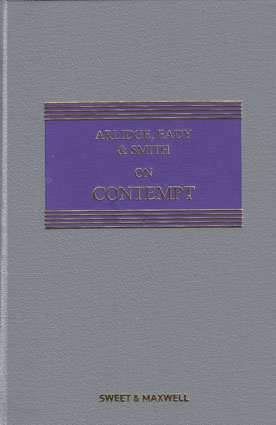
Wildy's Book of the Month: June 2017
Arlidge, Eady & Smith on Contempt is a comprehensive and authoritative commentary on the subject, explaining everything from the development of contempt, its origins in common law, its general principles, its various categories, and its statutory underpinnings (domestic and EU), through to the latest developments in this ever evolving area of law.
Since the last edition, there have been fundamental changes in the procedural landscape for contempt.
The 5th edition addresses, among many others, the following changes:-